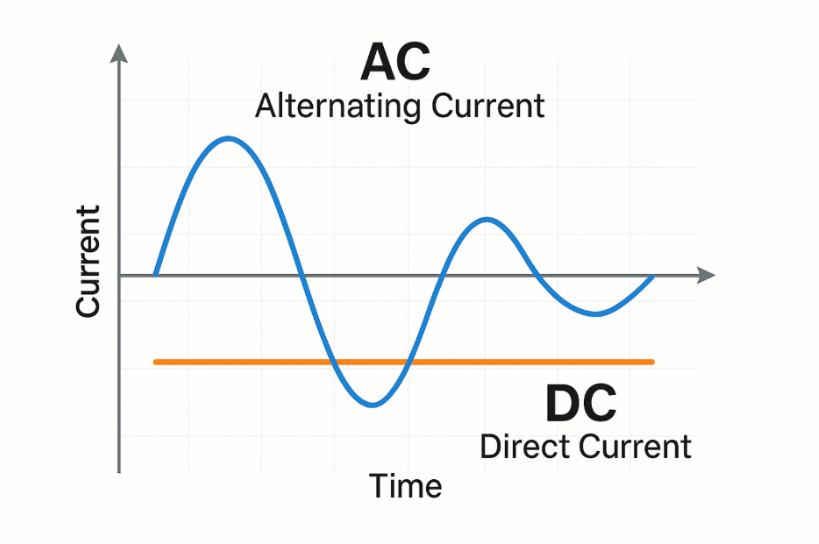Direct Current

Direct Current (DC) is the unidirectional flow of electric charge. Unlike Alternating Current (AC), which periodically reverses direction, DC flows in a constant direction and maintains consistent voltage polarity.
Characteristics
- Direction: Flows consistently from positive to negative terminal.
- Voltage: Remains constant over time.
- Source Types: Batteries, solar panels, fuel cells, and DC generators.
- Waveform: Straight line in a voltage-time graph (unlike the sinusoidal wave of AC).
Call-Out: DC Powers the Future
From charging your phone to powering electric vehicles and solar homes, Direct Current is silently driving the energy revolution—one steady flow at a time.
Applications
- Batteries and Portable Devices: All battery-powered electronics (phones, laptops, flashlights).
- Electric Vehicles (EVs): Batteries store and operate on DC; chargers convert AC to DC.
- Solar Power Systems: Photovoltaic panels generate DC before conversion.
- DC Grids and Microgrids: Used in data centers, telecoms, and renewable energy systems.
- Industrial Equipment: Certain motors and machinery in railways, mining, and electrolysis.
Advantages of DC
- Efficient Storage: Compatible with modern energy storage technologies.
- Lower Losses in Short Distances: Useful in microgrids and onboard vehicle systems.
- Simplified Integration: Ideal for systems powered by renewables like solar.
History of Direct Current
- 1800 – Early Discovery: Alessandro Volta invents the voltaic pile, the first source of steady electric current.
- 1800s – Industrial Use: DC powers telegraphs, electroplating, and electric lights.
- 1880s – War of Currents: Edison supports DC, Tesla and Westinghouse promote AC. AC wins due to efficient long-distance transmission.
- 1900s – Decline: AC dominates public grids; DC survives in batteries and some industries.
- 2000s – Revival: Renewables, electronics, and EVs drive a resurgence in DC use, especially in microgrids and fast-charging systems.




